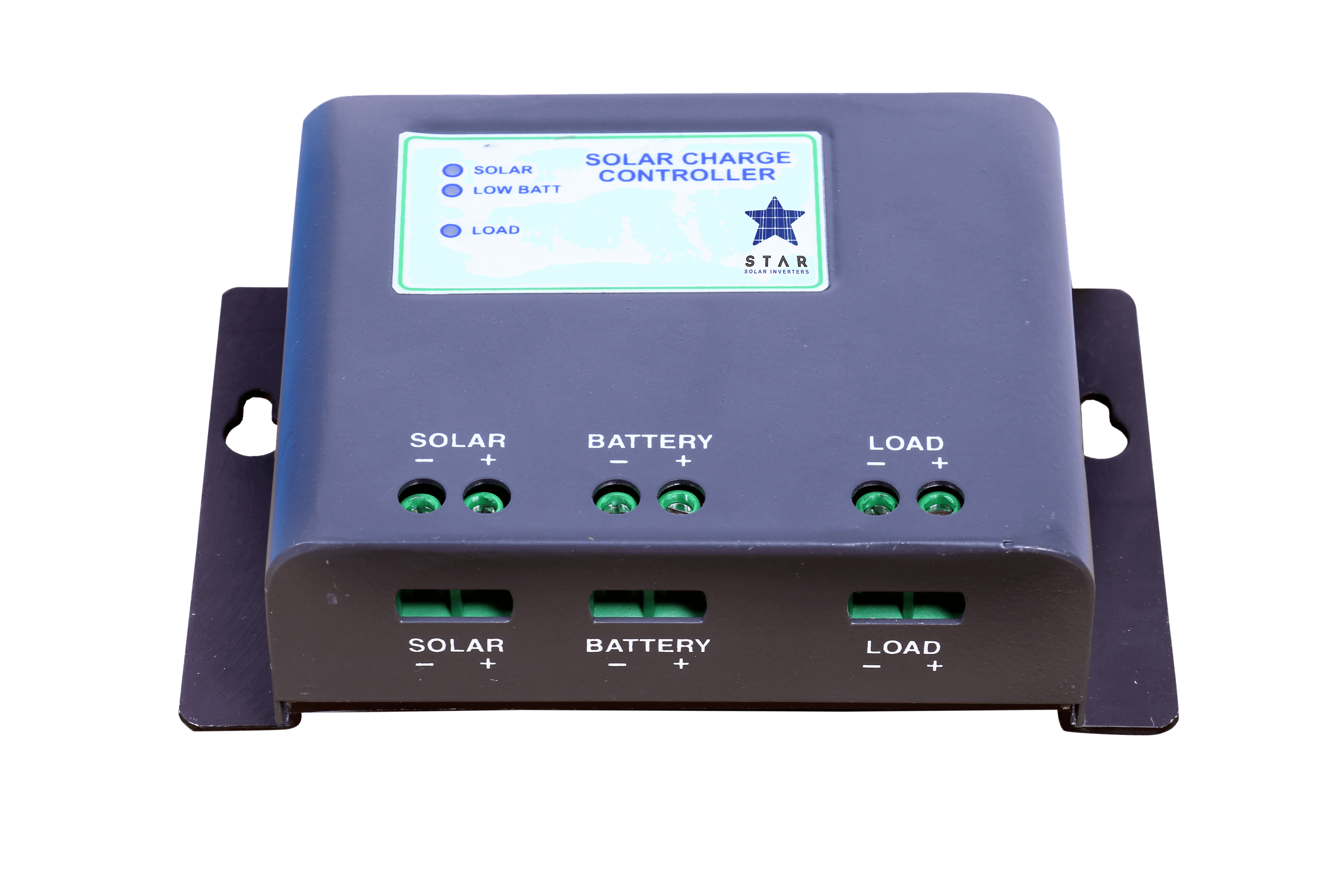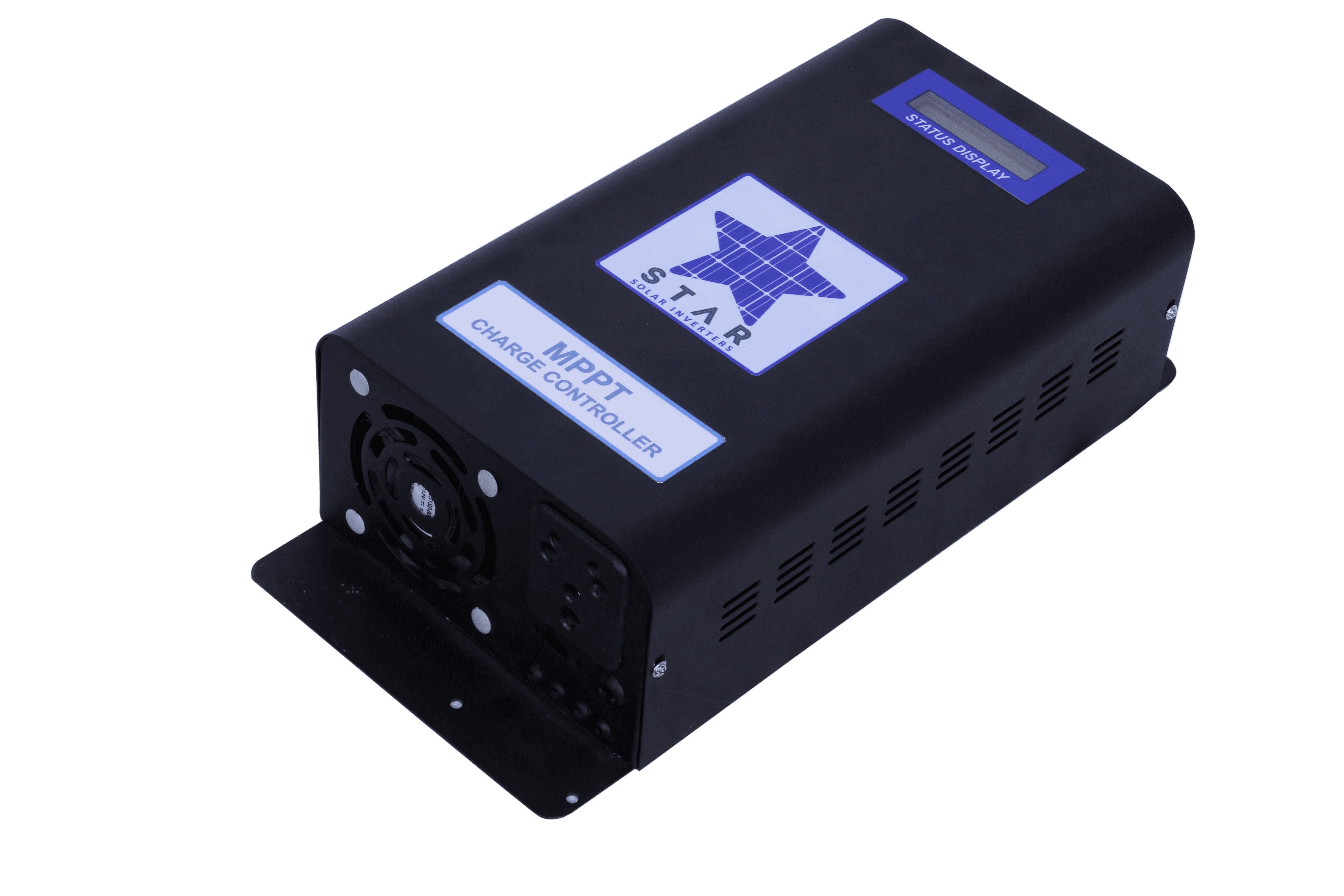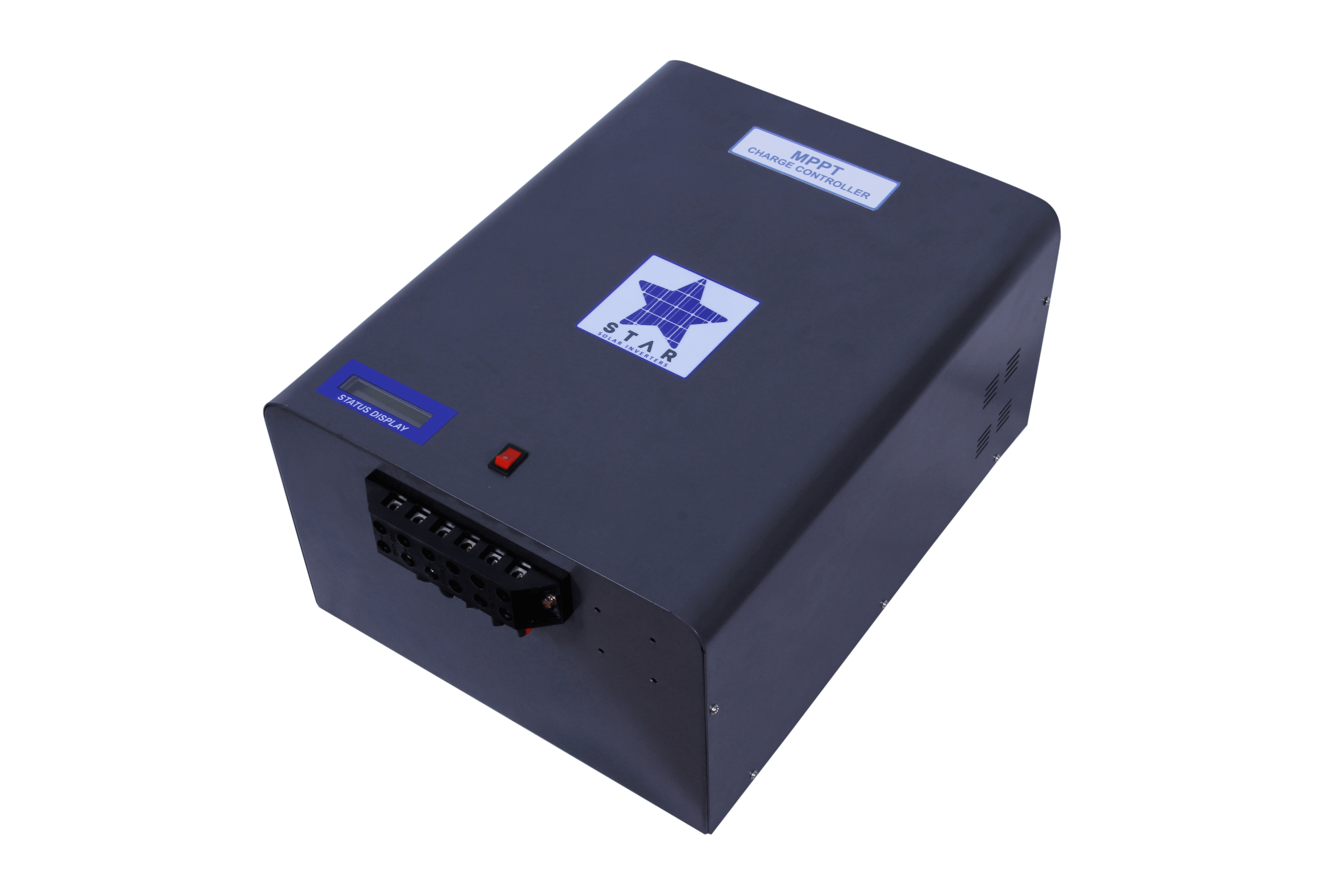PWM Charge Controller:
A PWM solar charge controller stands for “Pulse Width Modulation”. These operate by making a connection directly from the solar array to the battery bank. A 12V solar panel can charge a 12V battery. A 24V solar panel or solar array is needed for a 24V battery bank, and a 48V array is needed for 48V bank. If you try to charge a 12V battery with a 24V solar panel, you will be throwing over half of the panel’s power away. If you try to charge a 24V battery bank with a 12V solar panel, you will be throwing away 100% of the panel’s potential and may drain the battery as well.
Technical Specifications for Solar PWM Charge Controller:
| Charger Rating A | 20A |
| Battery VDC | 12V/24V Auto Detect |
| Solar Voc Max | For 12V System - 25V max / For 24V System -50V |
| Auto Sensing for 12V/24V | Available |
| Dusk Dawn Feature | Available |
| Protections | |
| Over Load | DC Load Control 20A |
| Low Battery | Load Disconnection |
| Lightening/Surge | Protected upto 4KV Surge |
| Solar High Current Protection | Available |
| Solar High Voltage Protection | Available |
| Solar Reverse | Blocking Diode is provided to Prevent reverse flow of current |
| LED Display | Solar Charge ; Battery Reverse ; Low Battery ; Over Load |



